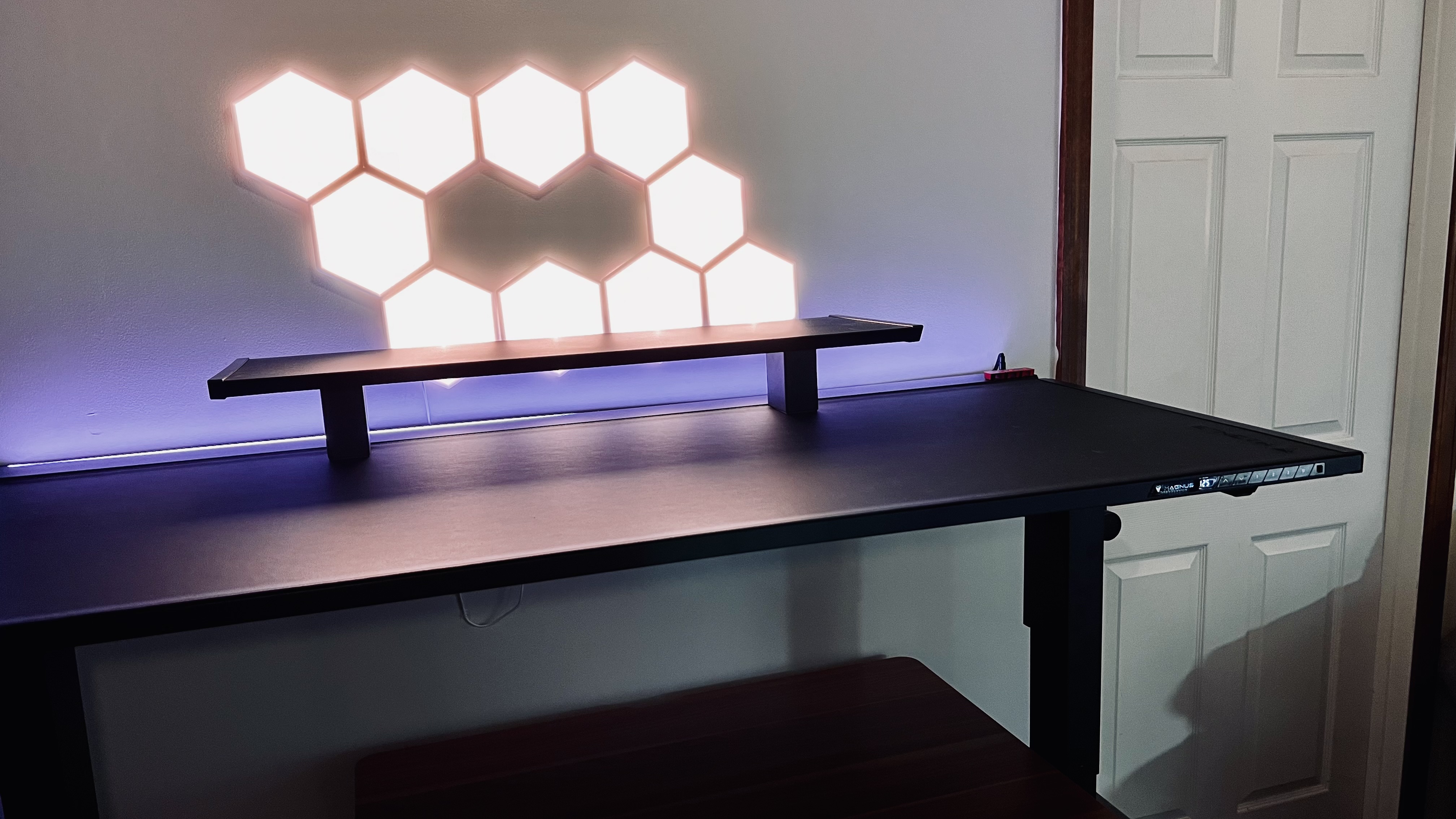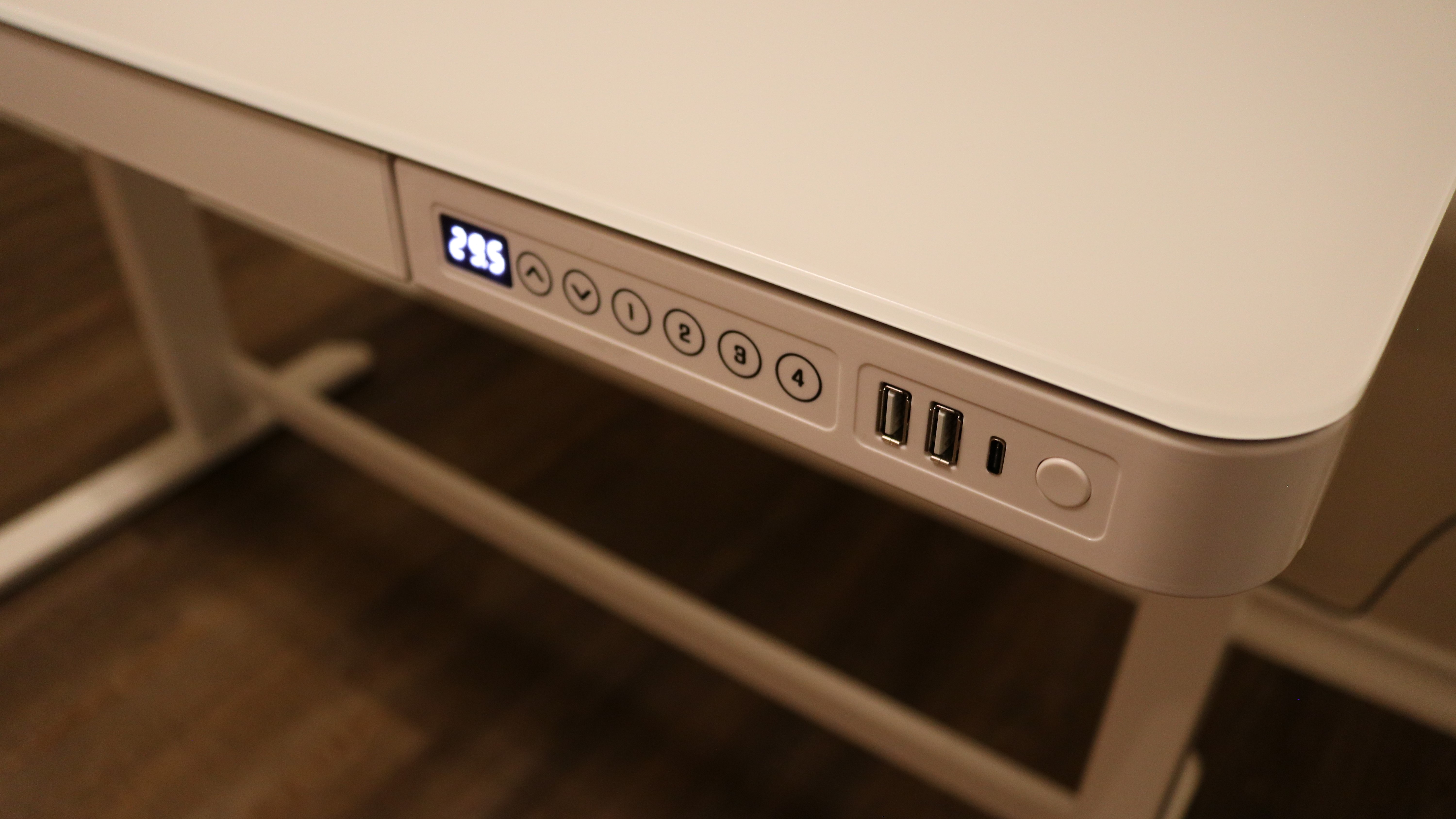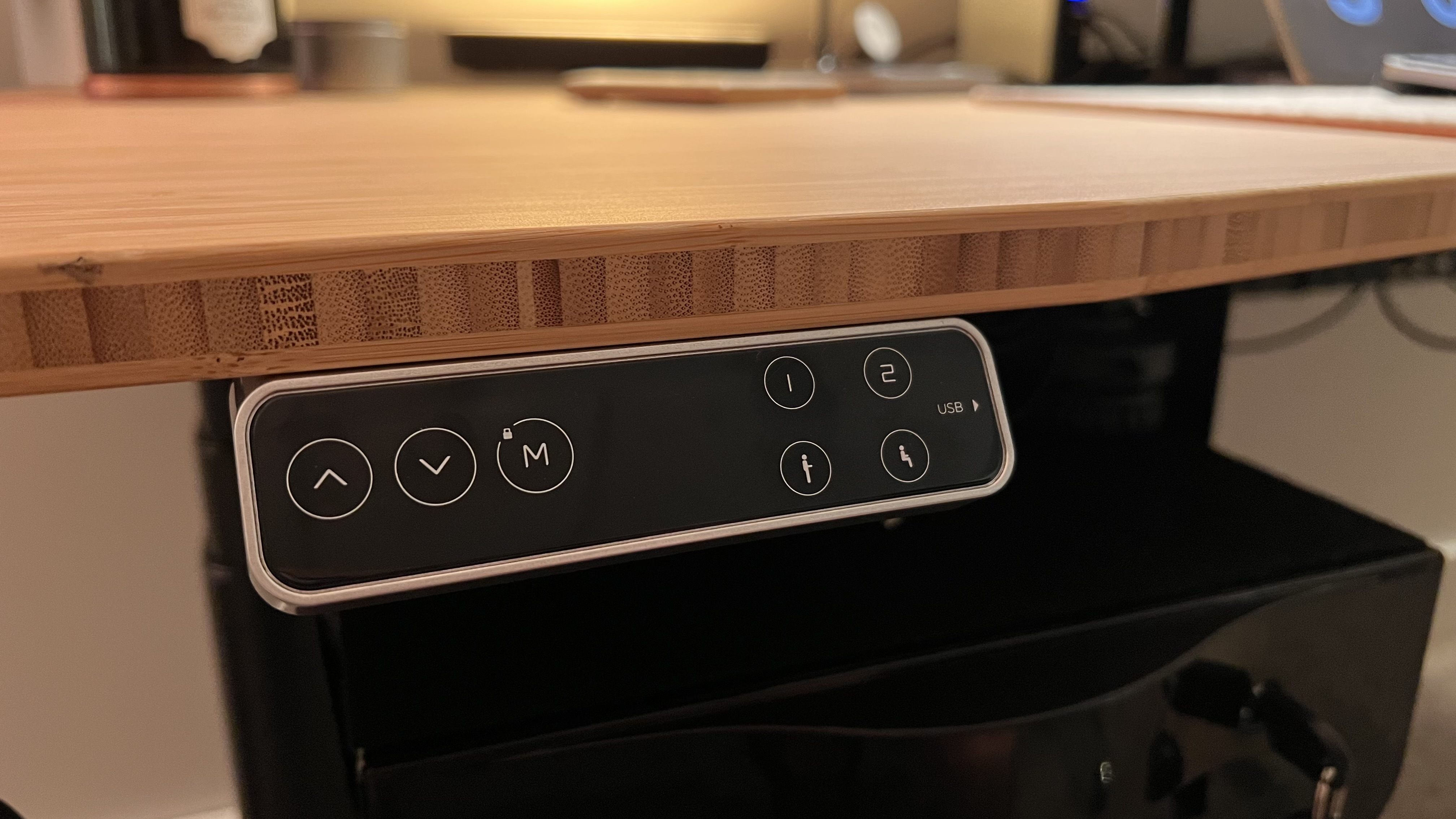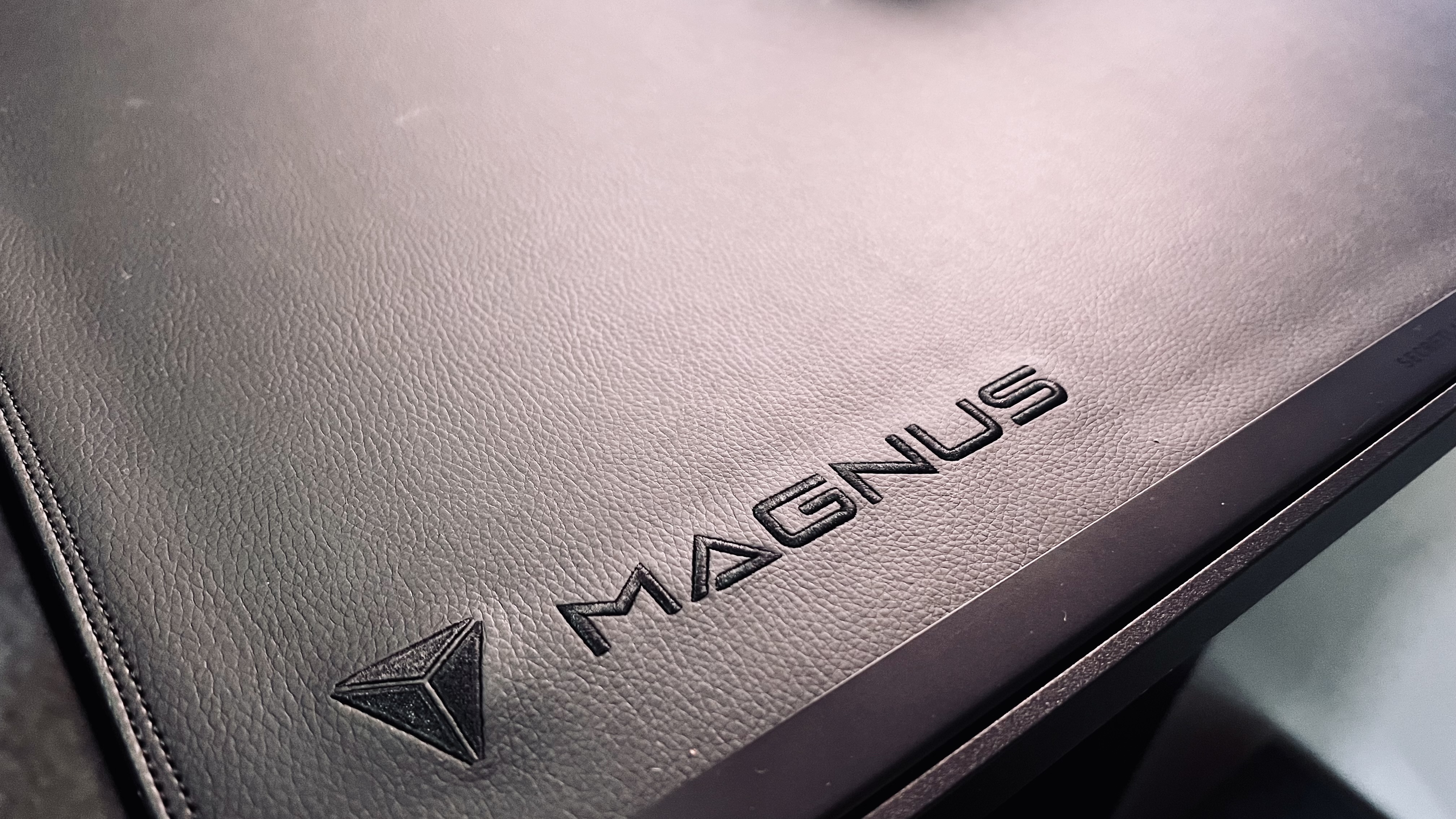Don't buy a standing desk yet - I'm an office furniture pro and these are the 7 specs I always check first
Seven specs and features to watch out for when buying a standing desk this Prime Day

Alright, you’ve measured up space in your home office, you’re certain the best standing desk you can find is going to fit. You love the style, the desktop material is suitable for your needs. Now it’s just a case of adding it to your basket and checking out, right?
Well, hold your horses - your office furniture shopping spree isn’t over just yet. There are a few specs and features you’ll want to make a note of before committing to the purchase.
I’ve already spotted a host of Prime Day standing desk deals ahead of Amazon’s summer sales event. And while it may be tempting to select the cheapest one you can find (or the most expensive, if you’re a regular Moneybags), I wouldn’t recommend just hitting buy until you’ve checked a few specifications and features first.
Based on my extensive tests and reviews of standing desks, here are the things I’d absolutely check first, to make sure your desk ticks every box.
1. Height range

Most adjustable desks I find on Amazon have a height range of around 28in to 48in (or 71cm to 112cm, if you’re into the whole metric thing). To be honest, that’s going to be suitable for most users of average height.
For users standing at 5ft 5in, the best height to set your desk is 39in - you won’t want it any lower than this or you’ll be hunched over the desk.
If you stand around 6ft, you’ll want to make sure the desk rises to at least 44in. Taller than that? Well, get one that goes as high as you can find.
Sign up to the TechRadar Pro newsletter to get all the top news, opinion, features and guidance your business needs to succeed!
2. Storage
One of the biggest complaints I hear about standing desks is the lack of storage - that's partly due to the design and partly because it serves to add more weight to the tabletop, which means it demands more power to elevate.
Some desk-makers do include storage options, though. For example, the Comhar range from FlexiSpot has a traditional but admittedly slim under-desk drawer, suitable for storing documents and tablets, maybe a laptop at a push. Even budget brands like Fezibo and Devoko have models with top-side fabric drawers and monitor shelving that at least help you keep the desk uncluttered.
As part of this, I'd also be looking at whether the desk has some form of cable management - a fancy way of saying 'a tray at the back'. Some standing desks, like the Secretlab Magnus, have these built into the desk itself, while others sell them separately.
3. Memory presets

Memory presets on a desk’s control panel is a really nice way of being able to raise or lower a desk from sitting to standing height without having to press and hold the up and down buttons or spend endless hours tweaking it.
Find the perfect height, set the memory, and now, at the push of a button you can hit that sweet spot every time. It’s a good way to consistently maintain ergonomics and comfort levels.
I generally like my standing desks to have three memory presets, but I tend to see a lot of the cheaper standing desks only hold two height ranges in memory. This may be fine, but it’s always worth checking how many your chosen desk has, as you may find you require more than that for different ways of working.
4. Anti-collision detection
Desks with anti-collision detection will have built-in sensors that can pick up when something is obstructing the lowering or elevation of a desk, and then stop the operation.
Most standing desks have this feature, particularly the mid-range and high-end models. However, it’s not a universal feature, though it’s worth making sure it comes as part of the package.
As far as I’m concerned, this feature is absolutely vital, especially if you have children and pets. You don’t want to clonk them on the head as they duck under the table during operation (or maybe you do?). It’ll also help prevent damaging the desk itself. So, it’s worth making sure any standing desk you get has it.
5. Charging ports

One of the best things about adjustable desks is that a lot of them include some form of mobile device charging. That's really convenient and helps you stay productive - or unproductive, depending on what you're using your phone for.
Cheaper desks often don't have any charging whatsoever. So you'll need to trail more cables across the room to keep the battery up.
Mid-range desks will have one or two USB-A ports set beside or built into the control panel. And higher-end standing desks may have either USB charging or a wireless charging area on the desktop itself.
6. Warranty
I like a good, long warranty. It’s nice to feel covered, especially when spending out on an investment like a standing desk, so if anything goes wrong, you can get parts replaced.
I see a lot of budget standing desks offer low warranties of around a year or two, three years if you’re lucky. At the upper end of the scale, I’ve seen long coverage of anywhere between 7 and 15 years.
As a note on this, a lot of manufacturers will offer different warranties for different parts of the desk. Generally speaking, the frame will be covered for longer than the desktop itself (since that’s where the magic happens, and you’re not sliding your mouse across the metal legs for hours at a time - no judgement if you are, mind).
My advice? Buy the standing desk with the longest warranty within your budget.
7. Manufacturer

Amazon is absolutely full of standing desks from different desk-makers - and not all of them will be worth it. I’d personally opt for recognizable brands in this area, as you know what you’re going to get.
At the budget end, Fezibo is a company we’ve had generally good experiences with, and still offer a wide range, from desks with drawers to L-shaped models.
For low to mid-range desks, FlexiSpot remains one of the best brands we’ve tested, with excellent build quality and stability for the price. For gaming desks, Secretlab straddles the mid- to high-end range.
And if money’s no object, companies like Branch, Herman Miller, Ergonofis, and Autonomous offer stylish and superb-quality standing desks for professionals and executives.
That’s not to say other manufacturers aren’t worth checking out - especially if the price is right - but check the reviews and the above specs to see if the juice is worth the squeeze.

Steve is B2B Editor for Creative & Hardware at TechRadar Pro, helping business professionals equip their workspace with the right tools. He tests and reviews the software, hardware, and office furniture that modern workspaces depend on, cutting through the hype to zero in on the real-world performance you won't find on a spec sheet. He is a relentless champion of the Oxford comma.
You must confirm your public display name before commenting
Please logout and then login again, you will then be prompted to enter your display name.